Surf, sand and fun: summer holidays at the Gold Coast
By JOL Admin | 30 January 2020
Ahhh, summer. For my family, and thousands of others who grew up in Brisbane and beyond in the 1950s, 60s and 70s, summer meant an annual pilgrimage to the Gold Coast to spend a week or two swimming or riding waves on the ‘lilo’, playing mini-golf, jumping on the in-ground trampolines at Southport and having your breakfast order delivered to your motel room through a hole-in-the-wall box. Such luxury! And sometimes the adults would dress up and sneak over the border to play the forbidden poker machines. Our family haunt was the Nestl’Inn at Tugun, far from the glitz and glamour found in Surfers Paradise but set right on the beach and everything we needed was in easy reach. These were the days before theme parks, air conditioning and the myriad activities available now. But they are fondly remembered as bright, hot, sunny and sandy days.
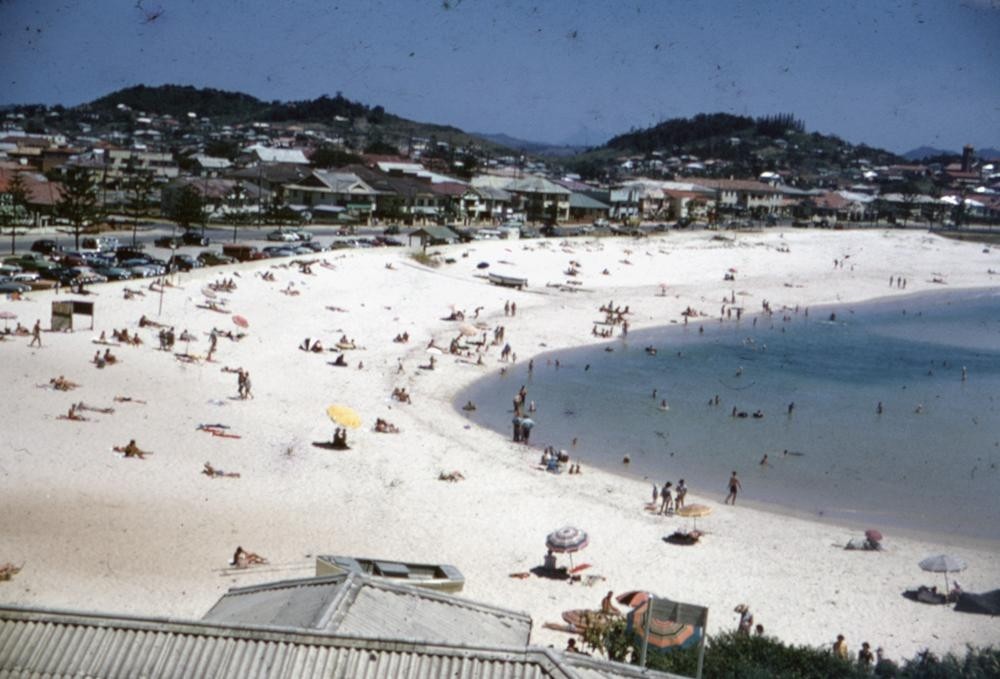
The Gold Coast is on Yugambeh country, which includes the City of Gold Coast, City of Logan, Scenic Rim Regional Council and the Tweed River Valley. Yugambeh people would meet for annual gatherings during summer to feast and conduct ceremony. It wasn’t until 1925, when a bridge was built over the Nerang River linking Southport to Surfers Paradise (then known as Elston) and the South Coast Road from Brisbane was extended down to Burleigh Heads, that the modern tourism industry really emerged. The same year, pioneer developer Jim Cavill opened his 16 room Surfers Paradise Hotel, close to a mostly deserted long white sand surf beach. He finally succeeded in getting the local council to change the area’s name to Surfers Paradise in 1933 after years of lobbying.
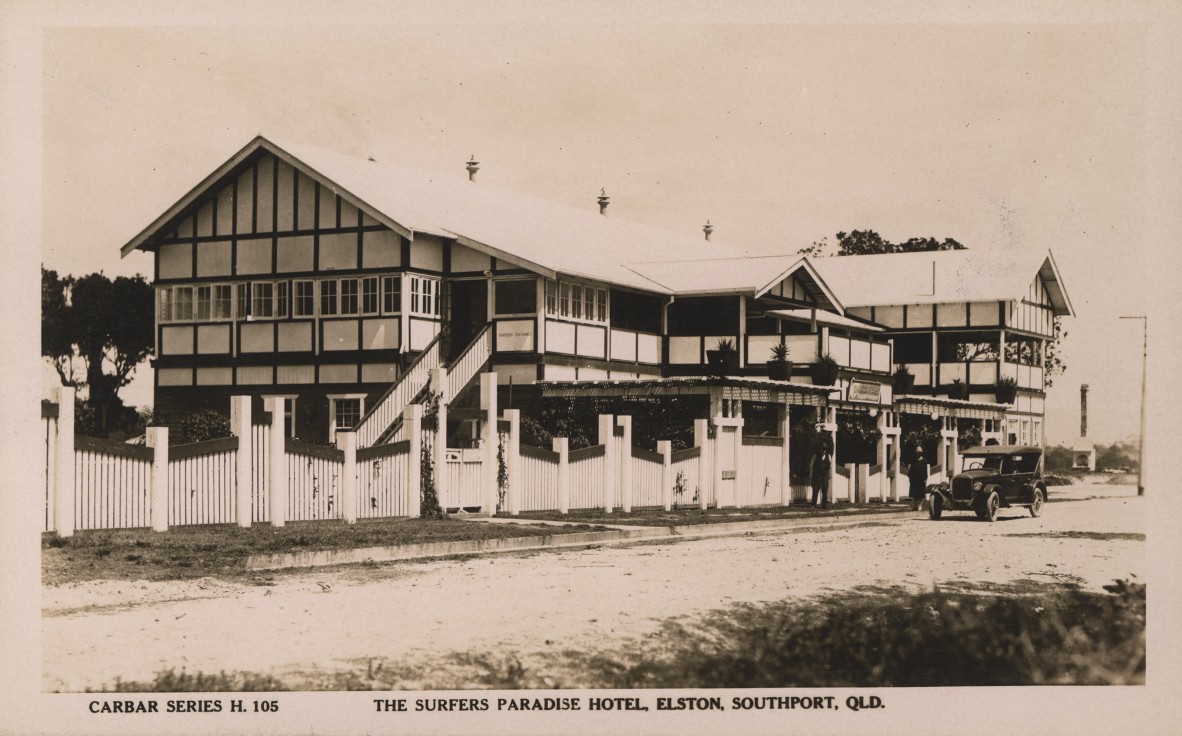
The fortunes of the South Coast, as it was then known, really took off in the early 1940s when thousands of Allied soldiers spent their valuable recreation leave in the area. After the War, the media labelled it the ‘Gold Coast’ after property prices boomed, unleashing a wave of land and property development. From the 1950s, serviced holiday apartments, motels, hotels and shopping arcades opened from one end of the Coast to the other. Canals and man-made islands were constructed, and in 1959, the State government proclaimed the Gold Coast a City.
A new style of accommodation, the motel (a ‘motor hotel’), appeared in 1954. The El Dorado (originally known as the Surfers Paradise Motel) was designed by Greg Graham and Bill Reichelt, and was one of only three of this new style in Australia. The El Dorado had just 12 rooms and was constructed from the materials available at the time including asbestos and cement cladding.
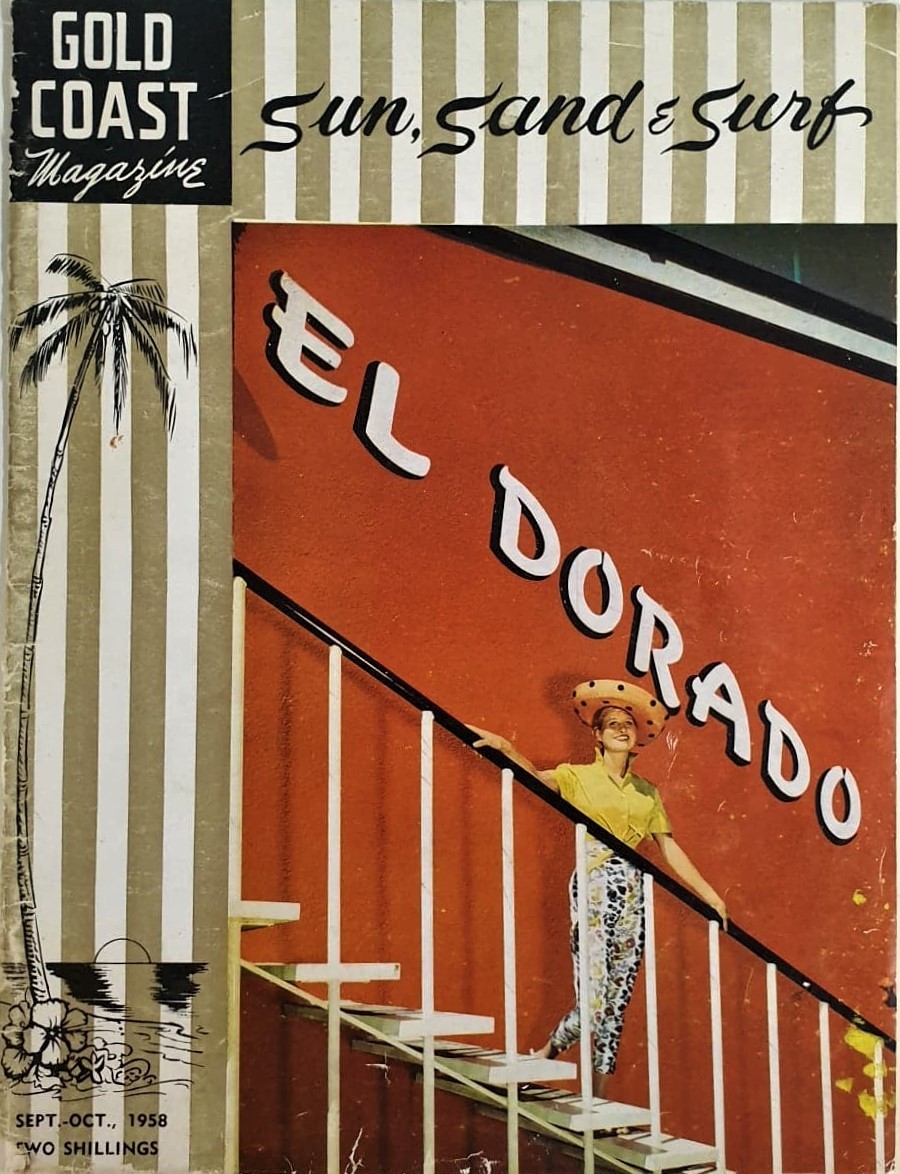
Another pioneer in accommodation on the Gold Coast was Lennon’s Hotel at Broadbeach. Built on an old sand mining site, it had no neighbours and was surrounded by sand dunes and unsealed roads. It was affectionately known by locals as an ‘oasis in the desert’. Designed by renowned Brisbane based architect Karl Langer, at five storeys it was the tallest building on the Coast until ‘Kinkabool’ (considered the first ‘high rise’ on the Coast) arrived in 1959. Perhaps the most famous Gold Coast motel of them all, the Pink Poodle, opened its doors on Boxing Day 1967, marking the peak of motel accommodation. It is estimated there were 140 motels on the Coast at this time.
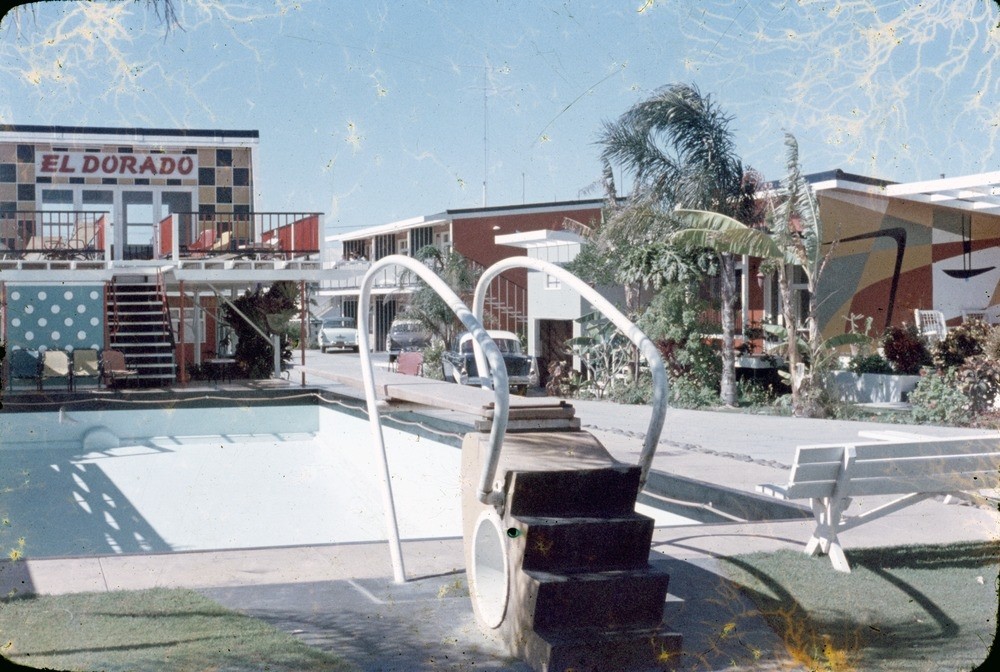
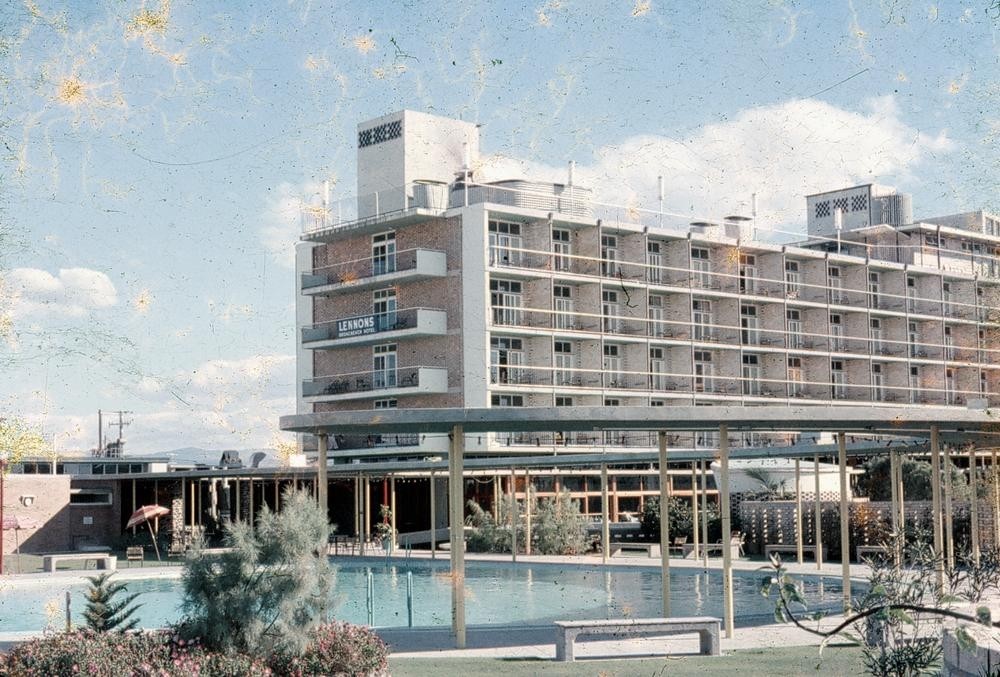
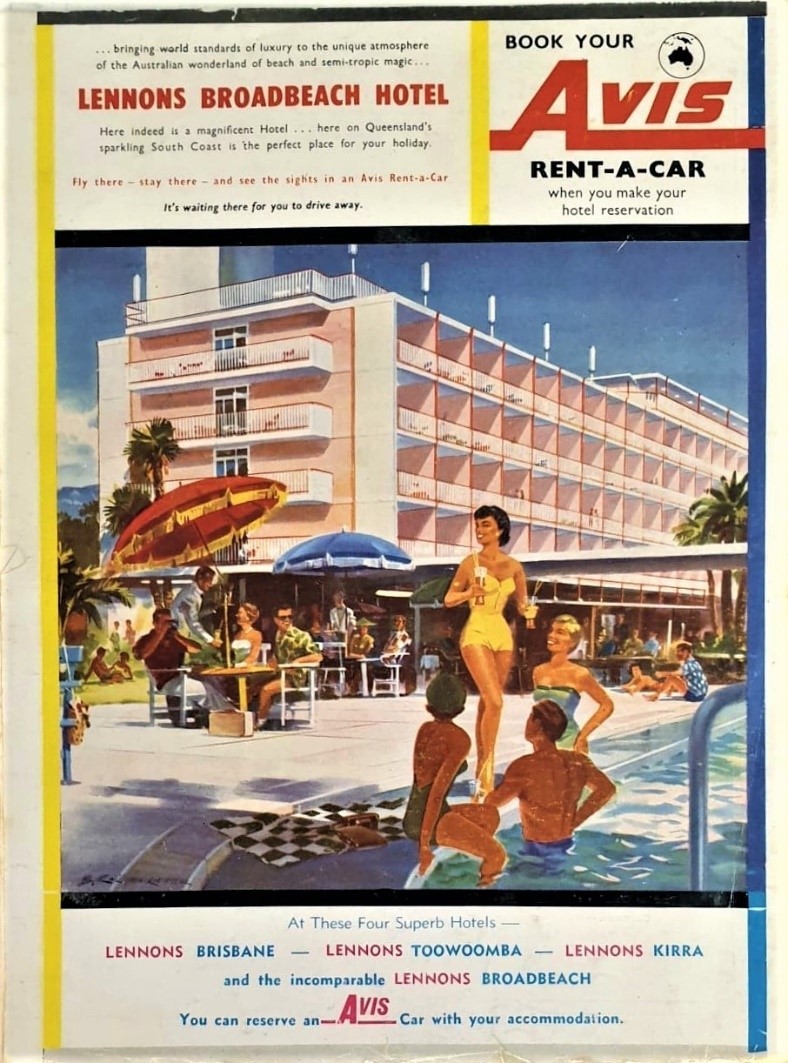
Sadly, the unbridled development that brought us these iconic gems soon found other uses for the land they occupied, as high rises took over from low rise motels and hotels. ‘Kinkabool’ and the Pink Poodle neon sign still stand, and some have recently been renovated to bring them back to their former glory, such as the ‘La Costa Motel’ at Bilinga. And while the Gold Coast remains a glittering beachside holiday destination, with millions of domestic and international visitors staying in every kind of accommodation imaginable, many lament the loss of the relaxed yet glamourous motel.
Anna Thurgood - Engagement Officer, State Library of Queensland
Discover
more:
30565 Charles Busch colour slides 1959-1960: 197 colour slides taken by Charles Busch in 1959 and 1960. The majority of the slides depict the Gold Coast and Gold Coast Hinterland.
30501 Surfers Paradise motion picture 1950s: This 1950s home movie of Surfers Paradise hotels and motels includes footage of the El Dorado, Lennon's, The Beachcomber, The Siesta, The Chevron and more.
Sources:
Dedekorkut-Howes, A, Bosman C, Leach, L, 2016, Off the Plan: The Urbanisation of the Gold Coast, CSIRO Publishing, Clayton, VIC.
Dedekorkut-Howes, A, Bosman C, 2011, The Unbearable Lightness of Being Gold Coast, Griffith University Urban Research Program, accessed 21 January 2020 .
Gold Coast Histories, City of Gold Coast, accessed 15 January 2020.
L’Huillier, R, Gold Coast History, accessed 15 January 2020.
State Library of Queensland, 2020, Yugambeh, accessed 24 January 2020,
Surfers Paradise History, City of Gold Coast website, accessed 16 January 2020.
The Hi Ho Motel, City of Gold Coast, accessed 21 January 2020.
Comments
Your email address will not be published.
We welcome relevant, respectful comments.